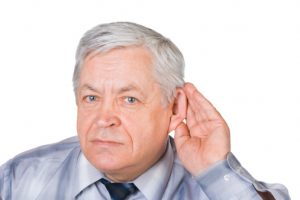
Annually, there are 4,000 cases of sensorineural hearing loss in the U.S., most commonly affecting those aged 30 to 60 years.
In most cases of sensorineural hearing loss, patients can recover completely. However, in about 15 percent of cases, it can actually become progressively worse, and hearing aids or cochlear implants could be required as treatment.
Causes of sensorineural hearing loss
This type of hearing loss usually takes place when damage occurs in the inner ear, the cochlea, or the nerve pathways between the ear and the brain. There are over 100 different causes of sensorineural hearing loss, and yet in some cases, a cause may never be uncovered.
Possible causes of sensorineural hearing loss include:
- Malformation of the inner ear
- Head injury or trauma
- Prolonged exposure to loud noises
- Neurologic conditions like multiple sclerosis
- Autoimmune diseases
- Meniere’s disease
- Lyme disease
- Ototoxic medication
- Snake bite venom
- Blood circulation problems
- Abnormal tissue growth or tumors
- Blood vessel disease
- Aging
Signs and symptoms of sensorineural hearing loss
Symptoms of sensorineural hearing loss may include a reduction in hearing upon awakening or changes in hearing when using headphones or talking on the phone. Some people experience sudden hearing loss followed by a loud pop.
Other symptoms of sensorineural hearing loss include:
- Difficulty following group conversations
- Muffled conversation sounds
- Inability to hear when background noise is present
- Difficulty hearing high-pitched sounds
- Dizziness
- Balance problems
- Tinnitus
Sensorineural hearing loss vs. conductive hearing loss
Conductive hearing loss, one of the two main types of hearing loss, is brought on by a problem in the middle ear—the eardrum or ossicles. The other type is sensorineural hearing loss, which is caused by damage to the inner ear. In some cases, a person may experience both types, which is considered mixed hearing loss.
There are several causes of conductive hearing loss, including the following:
- Ear wax buildup
- Ear infections
- Hole in the eardrum
- Glue ear – the middle ear begins to fill with fluid, which prevents the eardrum from moving properly
- Inherited hearing loss
- Problem with the small bones in the ear
- Trauma to the head
- Ear surgery
Signs and symptoms related to conductive hearing loss include difficulty hearing others speak, symptoms related to an ear infection like pain, excess wax, or tumor growth, and abnormal growth inside the ear leading to hearing loss.
The main difference between conductive hearing loss and sensorineural hearing loss is where the hearing loss occurs. Conductive hearing loss affects the middle ear, whereas sensorineural hearing loss affects the inner ear. In both types, though, damage is the primary cause of hearing loss.
Causes of sudden hearing loss
| Autoimmune | Vascular | Neurological Neoplastic | Trauma or Toxin | Infections and viral |
|---|---|---|---|---|
| Autoimmune inner ear disease (AIED) | Cardiopulmonary bypass | Acoustic Neuroma | Large vestibular aqueduct syndrome | Cryptococcal Meningitis |
| Cogan’s syndrome | Red blood cell deformability | Contralateral deafness after acoustic neuroma surgery | Inner ear concussion | Cytomegalovirus |
| Lupus | Sickle cell | Focal pontine ischemia | Inner ear decompression sickness | Herpes-simplex I |
| Meniere’s | Small vessel disease | Leukemia | Otologic surgery | HIV |
| Polyarteritis nodosa | Vascular disease associated with mitochondriopathy | Meningeal carcinomatosis | Ototoxicity | Lassa Fever |
| Relapsing polychondritis | Vertebrobasilar insufficiency | Migraine | Perilymph Fistula | Meningococcal meningitis |
| Ulcerative Colitis | Blood dyscrasias | Multiple sclerosis | Temporal bone fracture | Mumps |
| Wegener’s granulomatosis | Myeloma | CSF leak, such as caused by lumbar puncture | Rubeola, Rubella, syphilis, Toxoplasmosis |
Diagnosis and treatment options for sensorineural hearing loss
To diagnose sensorineural hearing loss, your doctor will perform a physical exam and review your medical history. During the physical exam, they will run tests to determine your level of hearing. They may also refer you for an MRI to check for any growths or abnormalities that could be contributing to your hearing loss.
In order to treat sensorineural hearing loss, your doctor must uncover the cause. Steroids are a common treatment as they can reduce inflammation and swelling. In some cases, a cochlear implant must be surgically inserted to help amplify sounds. Hearing aids can also improve hearing.
Diseases that result in sensorineural hearing loss may be fluctuating in nature or they could be associated with Meniere’s disease, which is characterized by hearing loss, ringing in the ears (tinnitus), and vertigo. Meniere’s disease can be treated with a low-sodium diet, diuretics, and corticosteroids. Over time, these symptoms will improve.
Tumors causing sensorineural hearing loss generally are reversed with surgical removal or irradiation therapy. Hearing may be preserved in 50 percent of cases if the tumor is very small.
Sensorineural hearing loss that results from acoustic trauma, head trauma, or any other condition that leads to the development of inflammation can be remedied with the use of corticosteroid medication. Steroids are good for reducing swelling to improve healing of injured inner ear structures.
Many patients can experience partial recovery from sensorineural hearing loss and roughly 3.6 percent will experience a complete recovery. It’s important that you see your doctor at the first signs of any changes in your hearing in order to receive treatment sooner rather than later.